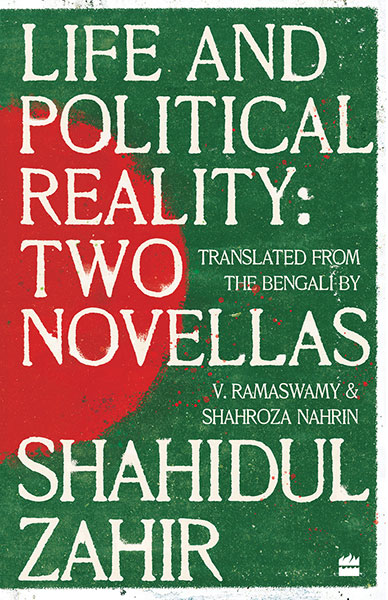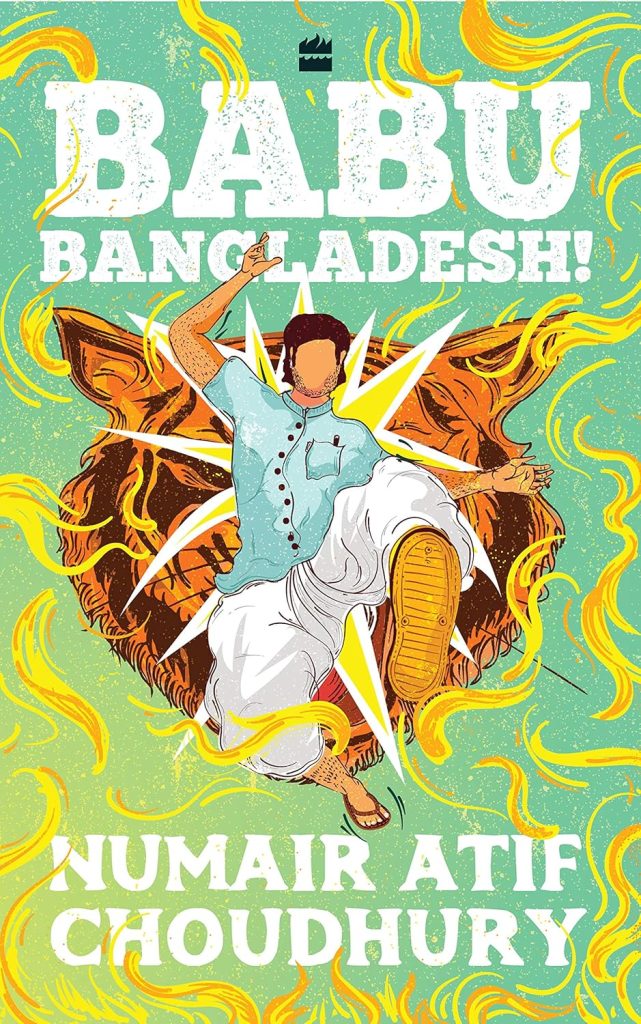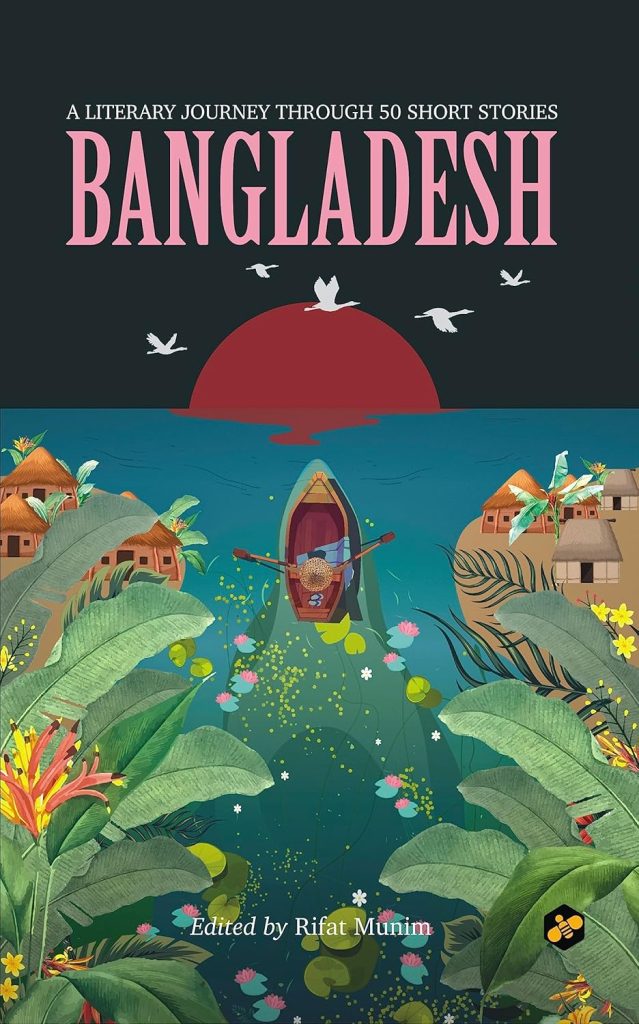Perhaps no living Bangladeshi will ever forget the afternoon of August 5, 2024. How none of us had slept the previous night, our icons glowing like candles throughout a night vigil on social media. How morning crept in with the fear and determination of thousands of Bangladeshis striding from across the country toward the capital. Many, if not most, of these people knew they might not return from the ‘Long March to Dhaka’. For the second time in a month, the government shut off internet connections mid-morning, cutting off communication channels during the protests. The gunshots, the burnt corpses, the perseverance that prevailed, and then a media announcement that Army Chief General Waker-Uz-Zaman would address the nation in the afternoon. As we waited with bated breath, another announcement: After 15 years of uninterrupted rule at the cost of hundreds, if not thousands of lives, Prime Minister Sheikh Hasina had resigned and escaped from the country without so much as a word for Bangladesh. The shock, the awe, the jubilation as we ran out to the streets, waved our flags and blasted songs that for so long we hadn’t sung with much fervor. A bloody sun has risen in the East, we sang, an echo from 71’s Liberation War. A tide risen in the sea of people. Rokto laal, blood red, rokto laal.
This week, Bangladeshis the world over are reckoning with how we have now lived a month of our ‘second independence’. To understand why we’re calling it that, you’d have to train your gaze your back to another historic August—1947. In gaining independence from the British, the Indian subcontinent also gained among the messiest acts of cartography. The drawing of the Radcliffe Line divided the region into two countries: India for Hindus and Sikhs, Pakistan for Muslims. Nearly 14 million people became displaced during the Partition—the largest human migration in history—claiming between 1.5 to 2 million lives. Bangladesh’s birth was a result of the unrest festering between Pakistan’s two wings. West Pakistan enjoyed an upper hand in employment, military appointments, and political decisions. On February 21, 1952, the youth of East Bengal sacrificed their lives to win the right for Bangla, their mother tongue, to be recognized as a state language in Pakistan. By ‘71, tensions spilled over into all out civil war. The West Pakistan Army unleashed Operation Searchlight on the night of March 25, razing the East Pakistan city of Dhaka, setting institutions on fire, raping women, abducting and killing civilians. The 9 month-long Liberation War that followed claimed nearly 3 million lives. By the time East Pakistan became the independent country of Bangladesh on December 16, 1971, a vast body of literature and visual art was already depicting the lived experiences of the genocide.
This year’s anti-discrimination movement rose against a different regime than the common enemy of ‘71. What began in July as public university students’ demands for job quota reforms intensified into a bloodbath orchestrated by Sheikh Hasina’s government. Since becoming Prime Minister in 2009, she had stayed in power through swathes of corruption, tampered national elections, legalized muzzling of free speech, and the torture and enforced disappearance of anyone who spoke out against the government or Hasina’s family legacy.
Over 1,000 people were killed in July and August’s protests; over 11,000 were arrested. The Awami League government deployed armed police and border guards onto unarmed college and university students. The internet was shut down on July 18, and with the country plunged into virtual darkness, law enforcers began raiding homes, searching personal devices, abducting and torturing protestors so they would falsely confess to working with the opposition. People across the country vowed not to let July end until Sheikh Hasina resigned—their collective anger flowered into music, murals and graffiti that turned Dhaka and parts of other cities into open air memorials for the martyred. On July 36, with a thousands-strong mob advancing to the government’s gates, Sheikh Hasina resigned and fled Bangladesh.
If this country’s history projects any recurrent theme, it is one of dominance time and again being overthrown by protest, almost always propelled by its student population. Slogans, graffiti, music, visual art, and literature have fueled these revolutions in all their phases. No list is ever complete, and this one is especially limited, because some of the richest, most powerful explorations of Bangladeshi life exist either in the Bangla language or in circulation within South Asia. Still, the books in this list illustrate the spirit that has persisted through decades of dissent in the country, as well as the social and political forces that have by turns inspired, failed, and persecuted them.
Khwabnama by Akhtaruzzaman Elias, translated by Arunava Sinha
It doesn’t begin with Bangladesh—the much longer past of this region is deeply embedded with revolution. In his magnum opus, which many would call a Bengali parallel to A Hundred Years of Solitude, Bangladeshi author Elias opens up the landscape of pre-Partition Bengal. It is 1946. Bengal’s soil is marked by communal riots, famine, the peasant revolts of the Tebhaga Movement, and the formation of Pakistan through freedom from British colonial rule. The landless farmers and fishermen of Bengal are caught in the crosswires of this chaos, and it is their collective voices that drive this novel forward. Elias’s protagonist is the ghost of Tamiz’s father, sunk knee-deep into mud in an unnamed village. There, he guards the Khwabnama, the Book of Dreams. The book changes hands, moving from dreamers and poets to an opportunistic middle class. The novel’s roving, intricate structure and its use of magic realism thus map the region’s past onto its present, pressing forth an interpretation of rural, marginalized dreams and a critique of urbanization and ecological damage.

Life and Political Reality by Shahidul Zahir, translated by V Ramaswamy and Shahroza Nahrin
“Come spring, we will be double,” was among the most popular slogans during the student protests this July-August. The line, spoken by an imprisoned student, is borrowed from Arek Fagun (Another Spring), a novel by Bangladeshi author Shahidul Zahir in which corrupt police officers are running out of jail space to hold the students they have been arresting. While Arek Falgun remains untranslated, Life and Political Reality collects two of Zahir’s seminal novellas which examine the lived experiences and aftermath of the ‘71 war. The book begins with a phot—the sound of the character Abdul Mojid’s sandal straps snapping—and magnified through the sound are Mojid’s memories of how his family and neighborhood lived through the war, the gendered and sexual violence that occurred, and the hunting down of Hindu minorities by the Pakistan Army. Nature and space bear witness to these events—crows eat the enemy’s flesh, a Tulsi tree offers strength and protection from the army, and the elements of ash and clay shelter a woman from being attacked in her own home.
The Bengal Trilogy by Tahmima Anam
Tamima Anam is a Bangladeshi-born author based in the UK. In A Golden Age, her debut novel, the narrator Rehana Haque is a woman from West Bengal who marries a man from Dhaka. Becoming a widow at a young age puts her at the behest of his exploitative, wealthier relatives in West Pakistan. With her family canvas mirroring the skewed power dynamics crisscrossing two Bengals and East and West Pakistan, Rehana’s story becomes one of political awakening. Her 17-year-old daughter, Maya, begins writing for a newspaper covering the ‘71 Liberation War. Her 19-year-old son, Sohail, joins the guerilla troops to fight against the occupying West Pakistan forces.
The Good Muslim opens a decade after the War to explore its aftermath. A dictator is in power now, and Bangladesh is swept by efforts to rewrite history to sanitize the accounts of sexual assault and torture of women during the war. Many others, such as Rehana’s son Sohail, are leaning towards religious militancy as an emotional crutch amidst the chaos. Rehana’s daughter Maya foregrounds the second novel in this series, as she struggles to accept her brother’s turn to a radical practice of Islam. The Bones of Grace follows the third generation of the Haque family. Zubaida is Maya’s adopted daughter, and she closes the series navigating between her roots in Bangladesh, where her parents’ memories of the Liberation War loom large, and her own ties to her immigrant experience in the US.
1971: A People’s History from Bangladesh, Pakistan and India by Anam Zakaria
Zakaria is a Canada-based Pakistani writer who grew up listening to a very different version of the War. “I knew nothing about the people with whom Pakistan shared twenty-four years of history”, she writes. “I knew nothing about how they remembered the war and how it differed from how Pakistan remembered, and in many ways tried to forget, 1971.”
And so she set out to “learn and unlearn” the different versions of 1971 as it is portrayed and remembered in Bangladesh, Pakistan, and India—how for Bangladesh the war is a people’s movement that led to the blood-stained birth of a liberated country, how in Pakistan it is seen as a loss and a defeat to India, whose army helped Bangladesh in the fight against Pakistan, and how India too views it as a military victory to lord over Pakistan. Zakaria talks to students and teachers who engage with 1971 in classrooms across the two countries. She visits museums, reads into traces of the war in Bangladesh’s public spaces, and talks to historians and retired military officials who witnessed or have written about the war’s geopolitical legacy. She collects oral testimonies from civilians—Bangladeshis and Pakistanis who lost family to the war—and from the people, such as Biharis, who were caught in its in-between spaces, displaced, stuck in Bangladesh, persecuted there for their Pakistani ancestors’ support of the genocide.
The Blood Telegram by Gary J. Bass
One key witness to the military crackdown of March 25, 1971, was Archer K Blood, the US Consul General posted in Dhaka. From the roof of his official residence, Blood witnessed the West Pakistan Army use tracer bullets, machine guns, and tank guns—weapons supplied by the United States—to destroy the city, targeting students, Hindu minorities, and their allies. Blood and his consulate cabled detailed reports of the atrocities to the White House. But for President Nixon and Henry Kissinger, the Pakistan Army’s General Yahya Khan was a bridge to building covert ties with China, which could help them extract successfully from Vietnam while also scoring a point over the Chinese’ rivals in the Soviet Union.
Gary J. Bass is a professor of politics and international relations at the University of Princeton and a former reporter for The Economist. In The Blood Telegram, he uses witness interviews, White House tapes, and declassified US papers to recount how Nixon and Kissinger ignored Blood’s heated, persistent warnings of a “genocide” being carried out in East Pakistan. Bass reveals how the American statesmen chose not to hold back the US weapons being used by the Pakistan Army, and particularly the sexist, racist language Nixon and Kissinger used to discuss Indians and Bengalis. Blood offers his own version of the events from March 1970, when he arrived in Dhaka, to June 1971, when he was removed from his post, in his memoir, The Cruel Birth of Bangladesh.
Seam by Tarfia Faizullah
The figures are contested—some sources say 100,000, and others say 400,000 women were raped by the West Pakistan Army and local men in 1971. After the war, the Bangladesh government titled these women as Birangonas, “war heroines”, setting up rehabilitation programs and welfare measures to ease them into the labor force. A Fulbright fellowship allowed the Texas-based poet Tarfia Faizullah to travel to Bangladesh, which her parents had once called home. Seam recounts her conversations with Birangonas in verse. The poems in this collection engage with the ethics of documenting trauma. Through scattered, fragmented retellings, the poems revisit scenes from before, during, and after the war as the women remember them, particularly the communities and family dynamics that were disrupted by how the war treated women.
The Spectral Wound: Sexual Violence, Public Memories, and the Bangladesh War of 1971 by Nayanika Mookherjee
A Professor of Political Anthropology at Durham University, Mookherjee offers a more research-driven account of how trauma survivors should be interviewed. In The Spectral Wound, she addresses how a culture of silence is presumed to exist around wartime rape narratives across history. But Bangladesh’s case was unprecedented: the experiences of Birangonas were widely depicted in state, literary, and visual media through the 1990s. Mookherjee sets these depictions alongside her conversations with women who survived sexual assault in the war; she talks to social workers and authorities who worked with these women, and dips into relevant government speeches and documents. Her research reveals how, by so widely portraying Birangona experiences in mainstream media, the initiatives also flattened the nuances of these women’s identities. They helped perpetuate a wound.

The Black Coat by Neamat Imam
One of the most mythologized and contested figures in Bangladeshi history is the recently ousted PM Sheikh Hasina’s father, Sheikh Mujibur Rahman, referred to with reverence as the Father of the Nation. With a natural charm for leadership and rhetoric, on March 7, 1971, he delivered a rousing, historic speech in Dhaka’s racecourse field, calling all East Pakistanis to revolt for national liberation. Mujib would spend the nine months of the Liberation War in exile before returning to Bangladesh, after its liberation, as the country’s first President. But as reporter Anthony Mascarenhas writes in Bangladesh: A Legacy of Blood, the cult of his personality would fail spectacularly against a greed for absolute power. The country suffered famine after he became President, a dangerous state of law and order prevailed under Mujib’s paramilitary forces, and multi-party democracy and freedom of press were dissolved. These chapters of his history would become forbidden knowledge for later generations of Bangladeshis, especially those born after his assassination in 1975 and others, like myself, who grew up during his daughter’s rule.
A novel seldom spoken about, let alone openly distributed in Bangladesh, Canadian-Bangladeshi author Neamat Imam’s The Black Coat depicts the first four years of post-Independence Bangladesh under Sheikh Mujib. His cheeky satire of a novel is narrated by the self-important voice of Khaleque Biswas. Once a wartime reporter and devout supporter of Mujib, Biswas’s character finds himself disenchanted with the Mujib cult, before he reverts to creating nationalist propaganda for him. His first-hand account satirizes how truth can be distorted in the hands of unchecked power

Babu Bangladesh! by Numair Atif Choudhury
Written over a period of 15 years, Choudhury’s epic novel opens onto Bangladesh in 2028. The voice of its narrator, a nameless ‘biographer’, then takes us back through the nation’s history as it swirled around the eponymous character of Babu. Babu was an advocate and a spirited environmentalist. A writer, politician, even something of a mystic. He was revered globally, and left a trail of essays, poems, and diary entries in his wake. He shared his birth year with Bangladesh, and in 2021, abruptly disappeared from the public stage. The biographer tells us that he has mysteriously received 147 pages on the story of Babu’s life—divided into sections titled Building, Tree, Snake, Island, and Bird. With each of these sections, Babu Bangladesh unfolds myths and histories surrounding the maze that is Bangladesh’s National Parliament (designed by Louise Kahn), the banyan tree under which the theatre of the Liberation War played out, the lives of snake-worshipping matriarchs in Nagaland, legends of the fish-people and sea creatures within the water that is Bangladesh’s life force, and the political currents that run through all these chapters of our past. Numair Atif Choudhury studied creative writing at Oberlin College and the University of East Anglia before getting his PhD from the University of Texas, Dallas. He passed away in an accident in 2018 shortly after completing this draft of his first novel.

Bangladesh: A Literary Journey Through 50 Short Stories edited by Rifat Munim
“In Bangladesh short fiction always leads the way when it is time to shake off the old norms, and embrace and create new ones,” Rifat Munim writes in his preface to this collection. A literary editor and translator based in Dhaka, with this debut anthology he is paying homage to the diversity of Bengali literature he grew up hearing and reading since he was a child. The book collects, in translation, a taste of realism, magic realism, and science fiction written in Bangla. It reveals the modernist, Marxist, and feminist strands of Bengali short fiction. Pairing these pieces with eminent and emerging Bengali translators such as Kaiser Haq, Arunava Sinha, Mahmud Rahman, Shabnam Nadiya, Noora Shamsi Bahar, and many others, it reaches from the 1950s to the 1990s to place popular writers like Humayun Ahmed, Imdadul Haq Milon, and Mashiul Alam alongside canonized voices of literary fiction such as Akhtaruzzaman Elias, Rizia Rahman, Shaheen Akhtar, and more. One theme that endures through this palette is the precociousness typical of the Bangladeshi nature—if, in one story, a character seeks to undo death using a pair of hands that repairs damaged objects, in another a flood of milk avenges the demise of an unlikely bond between a dog-mother and a human child.
Read the original article here
